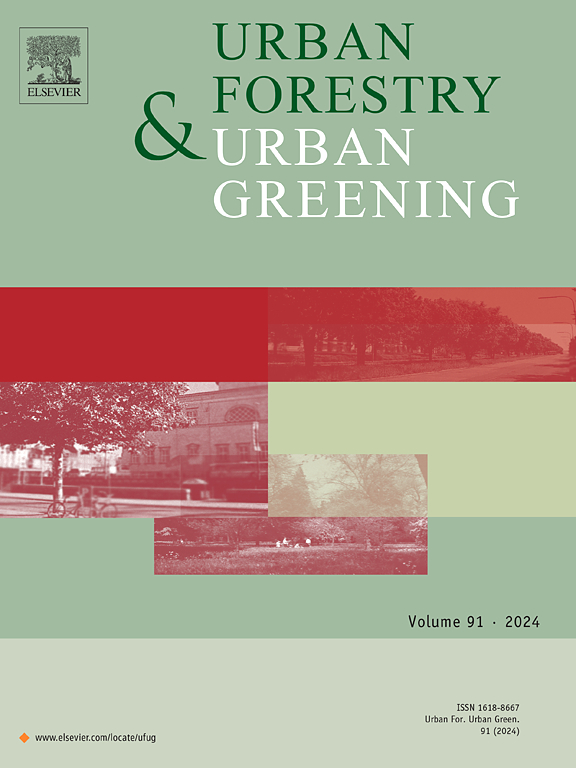The comparative thermal experience of young and old pedestrians in urban green spaces and in densely built areas
IF 6
2区 环境科学与生态学
Q1 ENVIRONMENTAL STUDIES
引用次数: 0
Abstract
Comfortable walking environments promote healthy lifestyle and facilitate active ageing. Thermal comfort during walking is a relatively unexplored research area. It has become a more critical issue due to the increased frequency of very hot weather. This study conducted a real-site experiment to study thermal comfort during walking for both older and younger adults. Participants walked in a “shaded-unshaded-shaded” sequence in a densely built-up area and a green space during very hot weather conditions. Microclimate variables, participants’ physiological responses and thermal sensation votes were recorded in the experiment. The physiologically equivalent temperatures (PET) during walking status in different environmental settings were estimated for the older and younger adult groups. The results indicated that, after a person walked in an unshaded space and reached a “hot” thermal sensation, walking in a shaded built-up area improved thermal sensation but not to a neutral level. Only a shaded green space could help to restore comfort during walking. While younger adults’ thermal sensation changes were mainly explained by PET changes, older adults tended to be more affected by the different settings of built-up area and green space. Among the physiological metrics adopted in the study, skin temperature and heart rate showed significant correlations with the thermal sensation vote. Design implications such as street greening work and minimum provision of tree shading on pedestrian areas were discussed.
求助全文
约1分钟内获得全文
求助全文
来源期刊

Urban Forestry & Urban Greening
FORESTRY-
CiteScore
11.70
自引率
12.50%
发文量
289
审稿时长
70 days
期刊介绍:
Urban Forestry and Urban Greening is a refereed, international journal aimed at presenting high-quality research with urban and peri-urban woody and non-woody vegetation and its use, planning, design, establishment and management as its main topics. Urban Forestry and Urban Greening concentrates on all tree-dominated (as joint together in the urban forest) as well as other green resources in and around urban areas, such as woodlands, public and private urban parks and gardens, urban nature areas, street tree and square plantations, botanical gardens and cemeteries.
The journal welcomes basic and applied research papers, as well as review papers and short communications. Contributions should focus on one or more of the following aspects:
-Form and functions of urban forests and other vegetation, including aspects of urban ecology.
-Policy-making, planning and design related to urban forests and other vegetation.
-Selection and establishment of tree resources and other vegetation for urban environments.
-Management of urban forests and other vegetation.
Original contributions of a high academic standard are invited from a wide range of disciplines and fields, including forestry, biology, horticulture, arboriculture, landscape ecology, pathology, soil science, hydrology, landscape architecture, landscape planning, urban planning and design, economics, sociology, environmental psychology, public health, and education.
 求助内容:
求助内容: 应助结果提醒方式:
应助结果提醒方式:


